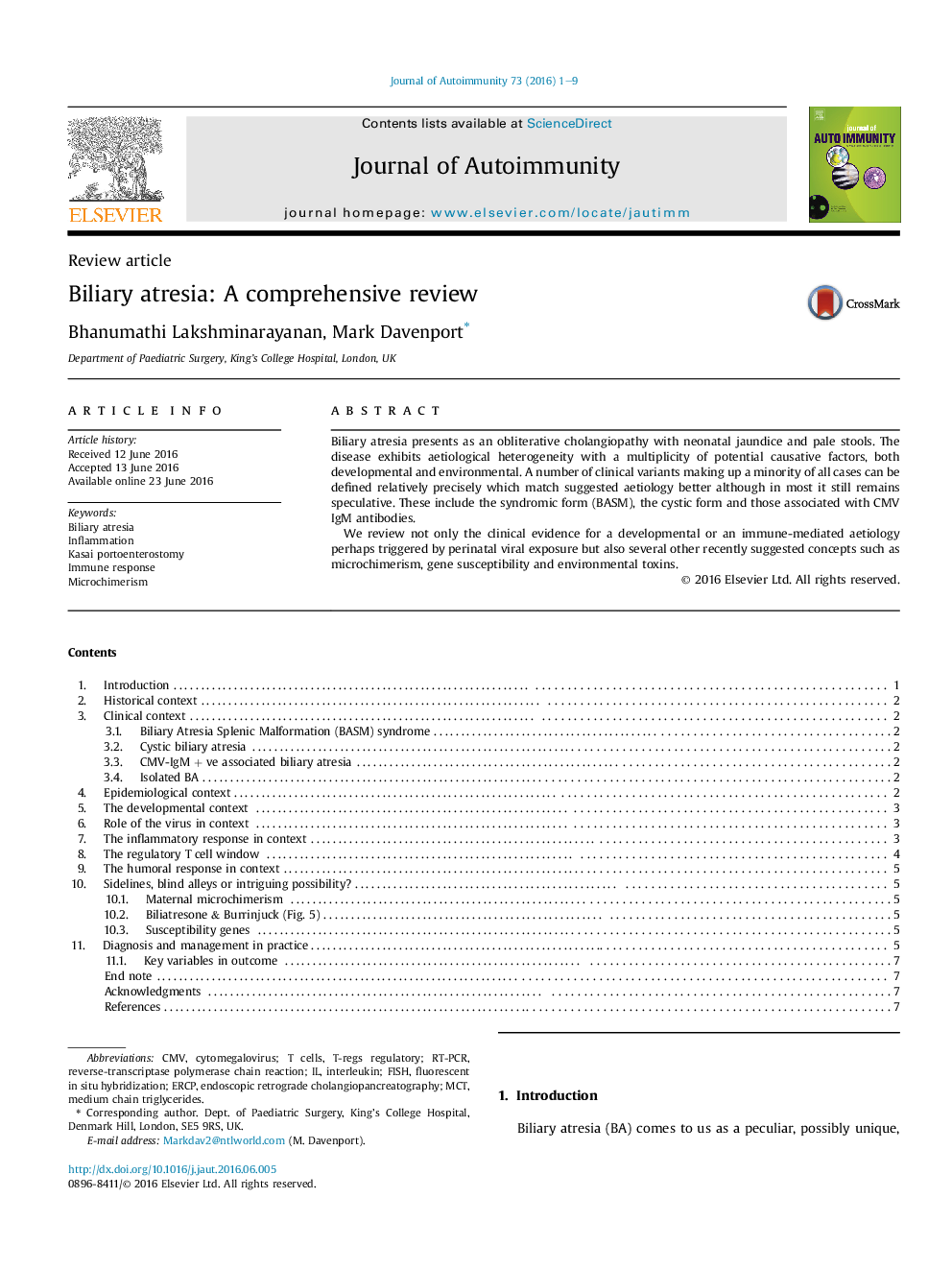| Article ID | Journal | Published Year | Pages | File Type |
|---|---|---|---|---|
| 3367633 | Journal of Autoimmunity | 2016 | 9 Pages |
•Aetiological heterogeneity implies a number of possible causes including both developmental and environmental factors.•30% display a marked inflammatory profile characterised by infiltration with T cells (Th-1 and Th-17).•Around 50–55% of infants can expect to clear their jaundice and about 50% will retain their own liver at 5 years.
Biliary atresia presents as an obliterative cholangiopathy with neonatal jaundice and pale stools. The disease exhibits aetiological heterogeneity with a multiplicity of potential causative factors, both developmental and environmental. A number of clinical variants making up a minority of all cases can be defined relatively precisely which match suggested aetiology better although in most it still remains speculative. These include the syndromic form (BASM), the cystic form and those associated with CMV IgM antibodies.We review not only the clinical evidence for a developmental or an immune-mediated aetiology perhaps triggered by perinatal viral exposure but also several other recently suggested concepts such as microchimerism, gene susceptibility and environmental toxins.
